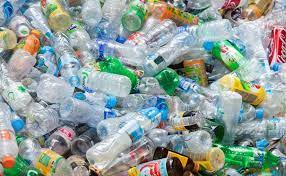A new report reveals that the plastic industry is strongly promoting so-called “advanced recycling” or chemical recycling, presenting it as a modern alternative to address the growing plastic waste crisis. However, behind this facade of innovation, serious technical, economic, and environmental limitations are hidden.
Advanced recycling is based on processes that break down plastic into its molecular components for reuse. Although the industry promotes it as a revolutionary solution, experts point out that these are technologies known for decades that have not yet proven to be effective on a large scale.
The rise of these proposals coincides with social pressure to stop plastic pollution. The industry has resorted to marketing strategies promising a circular economy, with plastics being recycled indefinitely without negative consequences for the planet.
However, the report published by the Center for Climate Integrity (CCI) in 2024 warns that these claims hide critical issues that could even lead to legal responsibilities for producers.
 recycling project
recycling project
Technical Problems, High Costs, and Covert Pollution
Chemical recycling—especially pyrolysis, a technique dating back to the 1950s—has been promoted for decades as a definitive solution. Despite technological advances, its large-scale implementation remains unfeasible: the processes are costly, consume large amounts of energy, and often end up producing fuel instead of reusable plastic.
The latter point is crucial for environmentalists. If plastic is not transformed back into plastic products, the cycle is not closed, and the circular economy becomes an illusion. “It’s not circular if the materials are not used to make new plastic,” said David Allen, the report’s lead author.
Furthermore, concerns were raised about the underreported environmental effects of these processes. Chemical recycling facilities can emit hazardous pollutants and contribute to global warming, contradicting the sustainability discourse used by companies to promote their initiatives.
Despite these criticisms, major plastic and oil corporations continue to invest in these technologies while downplaying the negative impacts. The controversy surrounding advanced recycling is growing, and more voices are demanding transparency and true sustainable solutions to curb the plastic crisis.
 World Recycling Day
World Recycling Day
Plastics Suffocating the Planet: Consequences and Critical Areas
Plastic pollution has become one of the most urgent environmental threats of the 21st century. Every year, over 11 million tons of plastic waste reach the planet’s oceans, seriously affecting marine ecosystems and posing an increasing risk to human and animal health. Their durability, which can last for centuries, turns these materials into a persistent trap for the environment.
One of the most visible consequences is the impact on marine fauna. Various species—such as turtles, birds, and fish—ingest plastic fragments mistaking them for food, often leading to digestive blockages, starvation, and death. Additionally, microplastics, tiny particles shed from packaging, textiles, and cosmetics, have been detected in food, drinking water, and even in the human bloodstream, raising concerns about their health effects.
Plastics also disrupt the balance of coastal ecosystems, interfering with natural processes like plankton photosynthesis and polluting waters. In urban areas, their accumulation in sewers and channels causes flooding, blockages, and the emergence of infectious hotspots. The issue is not only environmental but also exacerbates social and health conditions in vulnerable communities.
The regions most affected by this crisis include Southeast Asia, the Bay of Bengal, West Africa, the Caribbean, and the North Pacific, where the so-called “great garbage patch” covers over 1.6 million km². In these areas, many with deficient waste management systems, plastic pollution jeopardizes the livelihoods of entire communities.

